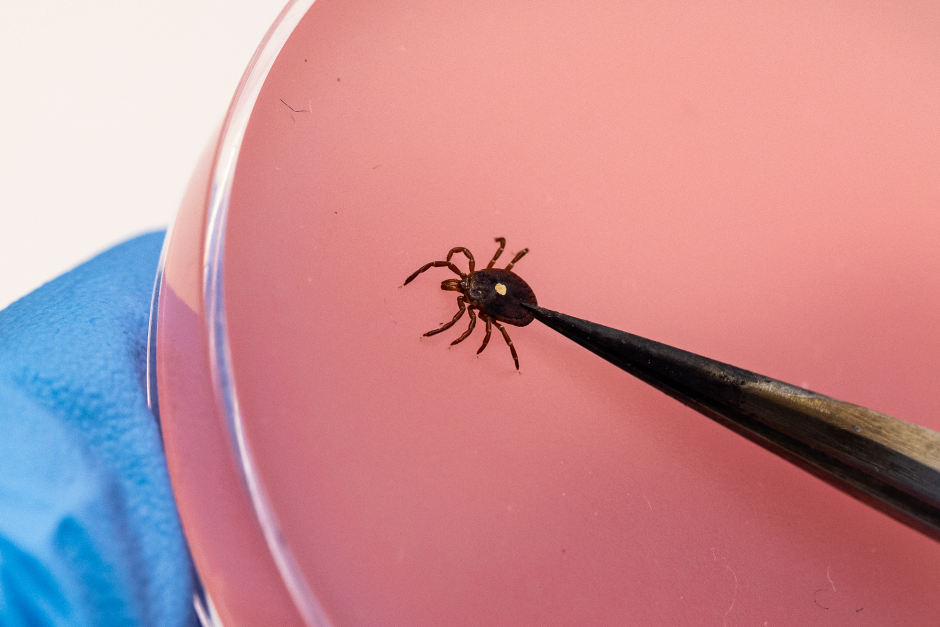
July 24, 2025
Contact: Brian Consiglio, consigliob@missouri.edu
Photos by Abbie Lankitus
It’s tick season, and University of Missouri researcher Roman Ganta is fighting back.
As summer heat fuels the rise of lone star ticks across the Midwest and beyond, so too emerges a microscopic menace: Ehrlichia chaffeensis, the dangerous bacterium behind the disease human monocytic ehrlichiosis (HME).
Like all bacteria, this tick-borne killer has potential to evolve and outsmart the antibiotic currently used to treat HME.
But at Mizzou, Ganta is already planning ahead.

“There’s only one antibiotic out there right now to fight this disease,” said Ganta, a Curators’ Distinguished Professor and McKee endowed professor in Mizzou’s College of Veterinary Medicine and researcher at Bond Life Sciences Center. “If the bacterium — Ehrlichia chaffeensis — were to evolve and become resistant to the antibiotic, we need backup plans, and our latest discovery lays the groundwork for future treatments.”
Ganta’s recent study dives deep into the bacterial playbook, comparing the pathogen in its two most dangerous forms — when it's infecting and when it's growing. What he found may change the game: the growth stage, where the bacterium rapidly replicates inside its host, has nearly twice as many proteins as the infectious stage. That means more vulnerabilities to exploit for treatment development.
“Those extra proteins are how the bacterium survives and thrives,” Ganta said. “And now we know what they are. That knowledge gives us new ways to fight back — new drug targets that could stop this thing before it even gets started.”
In addition to Ehrlichia chaffeensis, Ganta’s discovery helps scientists understand a whole class of tick-borne threats — from bovine anaplasmosis in cattle to the notorious Rocky Mountain spotted fever. These diseases are rising risks to public and animal health alike.
In Missouri, where lone star ticks are becoming more widespread, Ganta's work couldn’t be more urgent. Children, the elderly and immunocompromised individuals are most at risk — and with only one antibiotic option currently in play, the stakes are high.
Ganta isn’t working alone.
“Mizzou is the ideal place to fight this battle,” he said. “We’ve got the facilities, the interdisciplinary teams and the support from administrators to do research that makes a difference throughout Missouri and the Midwest.”
“Ehrlichia chaffeensis proteomic profiling reveals distinct expression patterns of infectious and replicating forms” was published in Frontiers in Cellular and Infection Microbiology.



